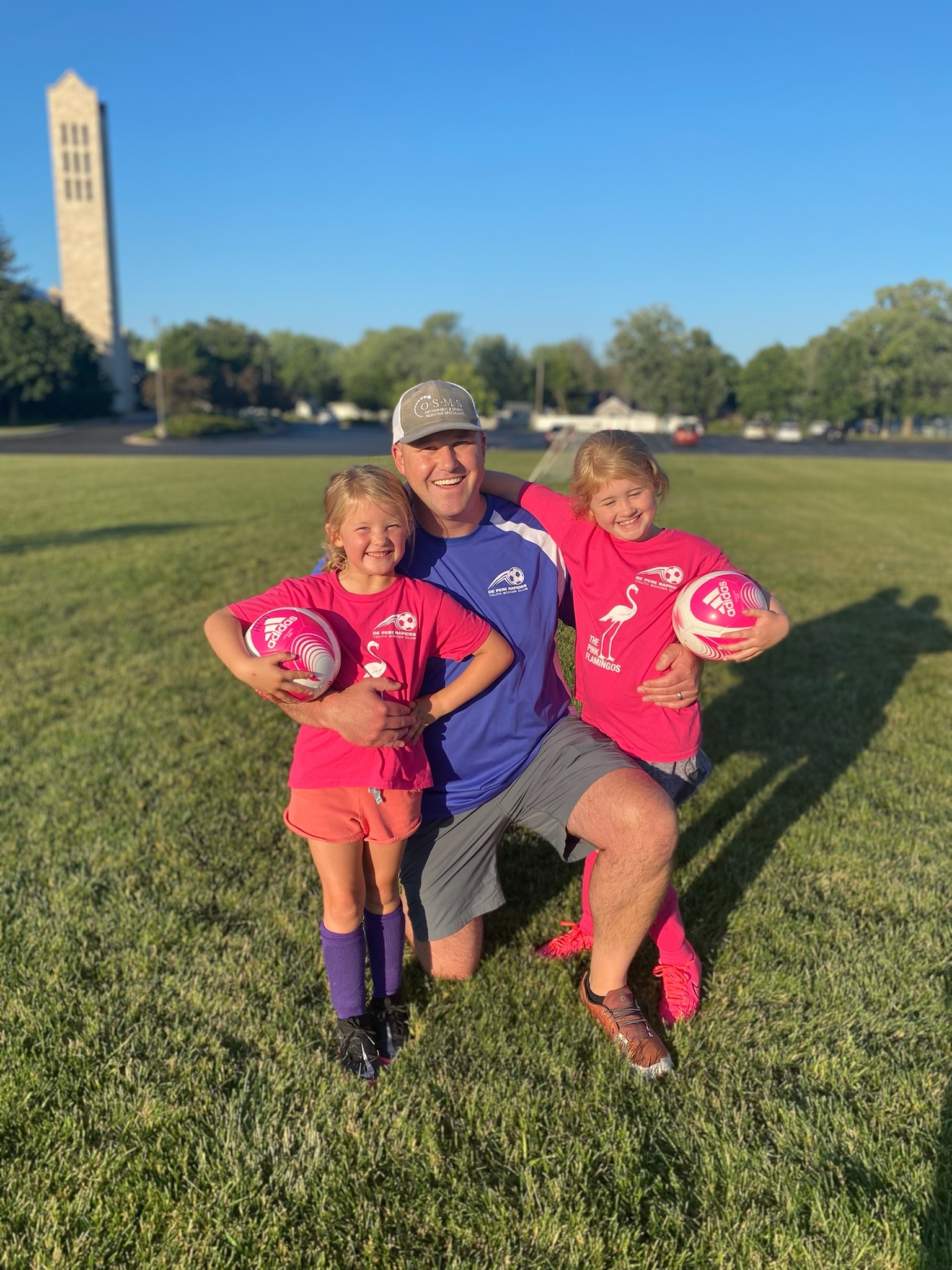*CRASH* “Ow, mom, my arm!” It’s a sound no parent wants to hear. What happened? Are they okay? How serious is it? Do we need to head to the ER? Oh boy – how much is this going to cost? Your head is spinning, and the questions are neverending while your child is tearfully clinging to you. Summer injuries in children are not fun, but we’re here to help!
Updated 7/29/22. Originally posted 7/15/21
 My name is Dr. Joel Hein, and I’m a Sports Medicine Fellowship-Training Orthopedic Surgeon at OSMS and a Green Bay native. As a specialist in acute and chronic injuries and as a local dad to six children, I know all too well about the risks associated with all the sports and activities Green Bay has to offer. Athletic activity and recreation obviously have many benefits, including positive impacts on physical and mental health and social well-being. So, the question isn’t “should you let your child participate in these activities?” but rather “what are the things you can do to help mitigate injuries while participating in these activities?” and “what do you do when they do get hurt?”
My name is Dr. Joel Hein, and I’m a Sports Medicine Fellowship-Training Orthopedic Surgeon at OSMS and a Green Bay native. As a specialist in acute and chronic injuries and as a local dad to six children, I know all too well about the risks associated with all the sports and activities Green Bay has to offer. Athletic activity and recreation obviously have many benefits, including positive impacts on physical and mental health and social well-being. So, the question isn’t “should you let your child participate in these activities?” but rather “what are the things you can do to help mitigate injuries while participating in these activities?” and “what do you do when they do get hurt?”
Common types of summer injuries in children:
Truth be told, kids running around, riding bikes, and playing sports in the summer months are generally safe. But accidents happen, and kids are going to get hurt. We know that some activities, like contact sports, are going to be more dangerous than others when almost one-third of injuries in children are sports-related. But all activities have the potential for injury, whether it’s an acute injury or an overuse injury.
An acute injury is a sudden injury that results from a traumatic event. Some examples of acute injuries include:
- Fractures (broken bones)
- Sprains
- Lacerations (cuts)
- Dislocations
An overuse injury is any type of muscle or joint injury that is caused by repetitive motions. Some examples of overuse injuries include:
- Stress fractures
- Aches and pains, including shin splints
- Tendinitis
What you can do to prevent summer injuries in children:
What things can you do to help your children avoid acute injuries?
- Use protective equipment such as:
- Biking: helmets.
- Skating: helmets, wrists guards, and pads.
- Supervise high-risk activities.
- When it comes to trampolines, I know your kids are going to ask oh-so-nicely to pile as many of their friends as possible onto the trampoline to see how high they can be launched into the air – trust me, I really do understand the fight. But when statistics show more than 75 percent of trampoline injuries occur when two or more children are jumping at the same time and collide, we have to face that the safest way is for your children to enjoy jumping solo.
What things can you do to help your children avoid overuse injuries?
- Limit the number of repetitive motions your child is doing.
- Get them involved in more than one sport or type of activity to help them move in different ways.
- Have them wear appropriate footwear. Flip flops and sliders are okay in moderation, but if you’re going to be at an all-day event, at a park, or walking for long periods of time, they should be wearing supportive tennis shoes to help protect their muscles, bones, and joints.
So now, let’s say you had a fun day outside with the family. Everyone took the above precautions, wore the right shoes, enjoyed some dinner that may or may not have been chicken nuggets again, and is now spending some downtime on a tablet or computer. Overuse injuries are also associated with inadequate positioning when looking at phones, tablets, and computers. Be mindful of their posture, making sure that their neck, back, and wrists are in neutral positions (meaning they are positioned naturally instead of bent or twisted) and that they’re taking frequent breaks.
What you can do when your child gets hurt
Let’s say someone does get hurt. Uh oh… Now what? For all those questions that start bouncing around in your head, here is some guidance when an injury does inevitably occur.
First and foremost, whether it’s a mild injury or more severe, you’re going to want to restrict movement to the injured area. Ice can help with swelling, and you may consider a pain reliever if your child is of an appropriate age and weight. It’s a good idea to have a conversation with their primary care provider if you have any questions about what type of medicine or vitamins they can take.
Things to monitor:
- If your child is limping or moving differently than they typically do
- If you see swelling that is persistent or getting worse.
You know your child best, so if something seems off, it is worth getting them seen by a medical professional. Unlike adults, children’s bones, muscles, tendons, and ligaments are still growing. What might be a sprain in an adult could be an injury to a growth plate in a child, which can hinder normal growth of their bone. So getting a quick diagnosis by an appropriate doctor is all that more important to prevent the injury from getting worse.
Your choices to get them seen by a medical professional:
You, as a parent and caregiver, have choices when it comes to the care your child receives. While taking them to an emergency room (ER) is an option, it is also very expensive. And because ER physicians treat all types of emergencies, you never know how many patients will have to take more priority over your child who is sitting there in pain.
With the OSMS walk-in clinic, your child is guaranteed to see an orthopedic doctor who will examine, take x-rays if needed, diagnose and treat the injury all in one visit. You might be wondering how that works with your insurance, especially if your child’s primary care provider is in a different health care system. Rest assured that OSMS accepts most insurance plans, and you typically do not need a referral for orthopedic care. And even though you’re seeing a doctor without an appointment, it’s billed as a regular office visit, ultimately saving you time and money. Why? Because our main goal is getting you and your family back to doing what you love to do.
It’s never fun seeing your child hurt, but it’s something that happens to all of us. So let them play but in a safe way. Understand what to look for when they do get hurt and know your choices when it’s time to seek professional care. As a parent and caregiver, your superpower is having the ability to make informed decisions that are best for your family.
Do you have any other questions about summer injuries in children? Let us know in the comments below or on our Facebook Page!

















